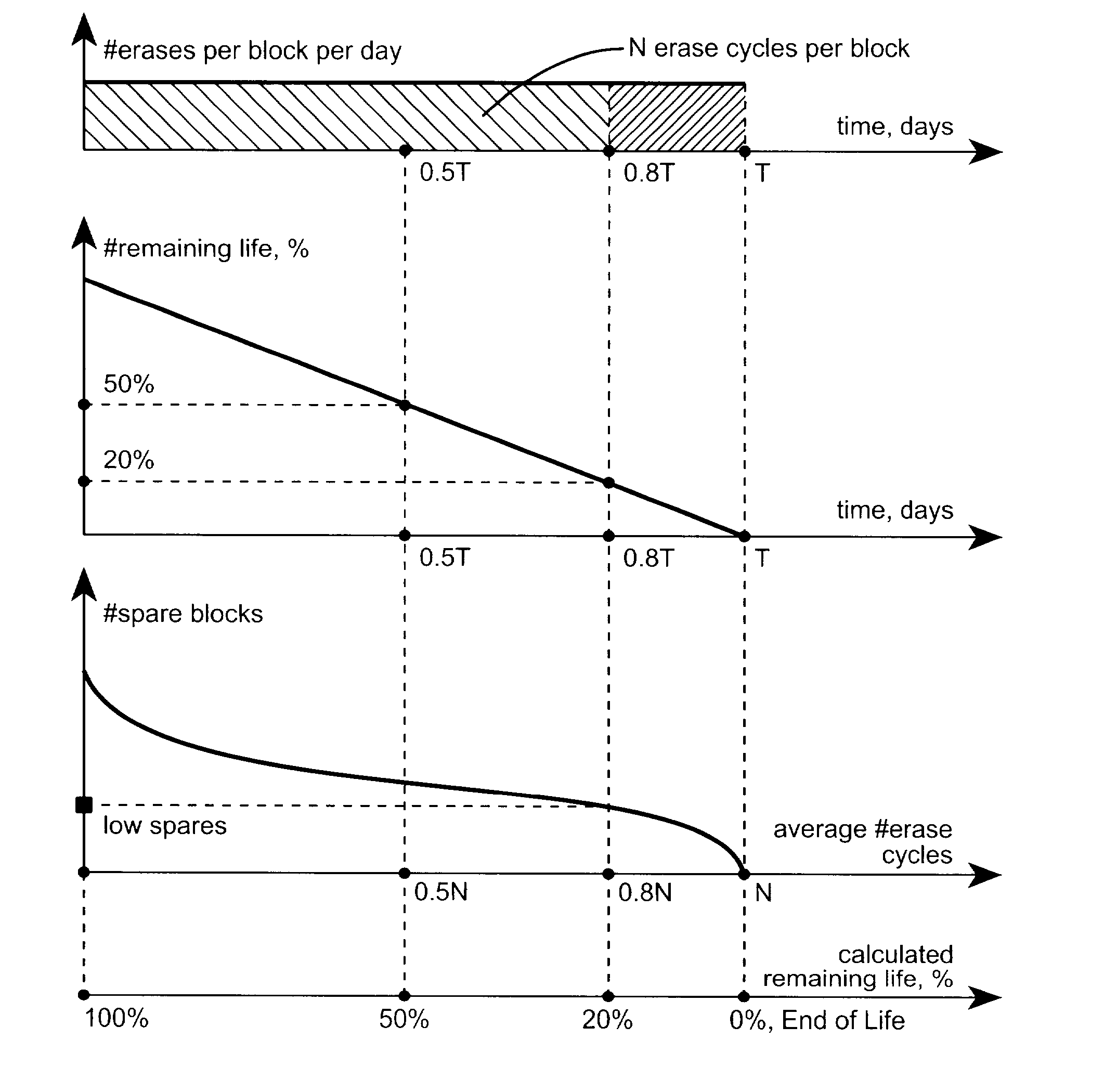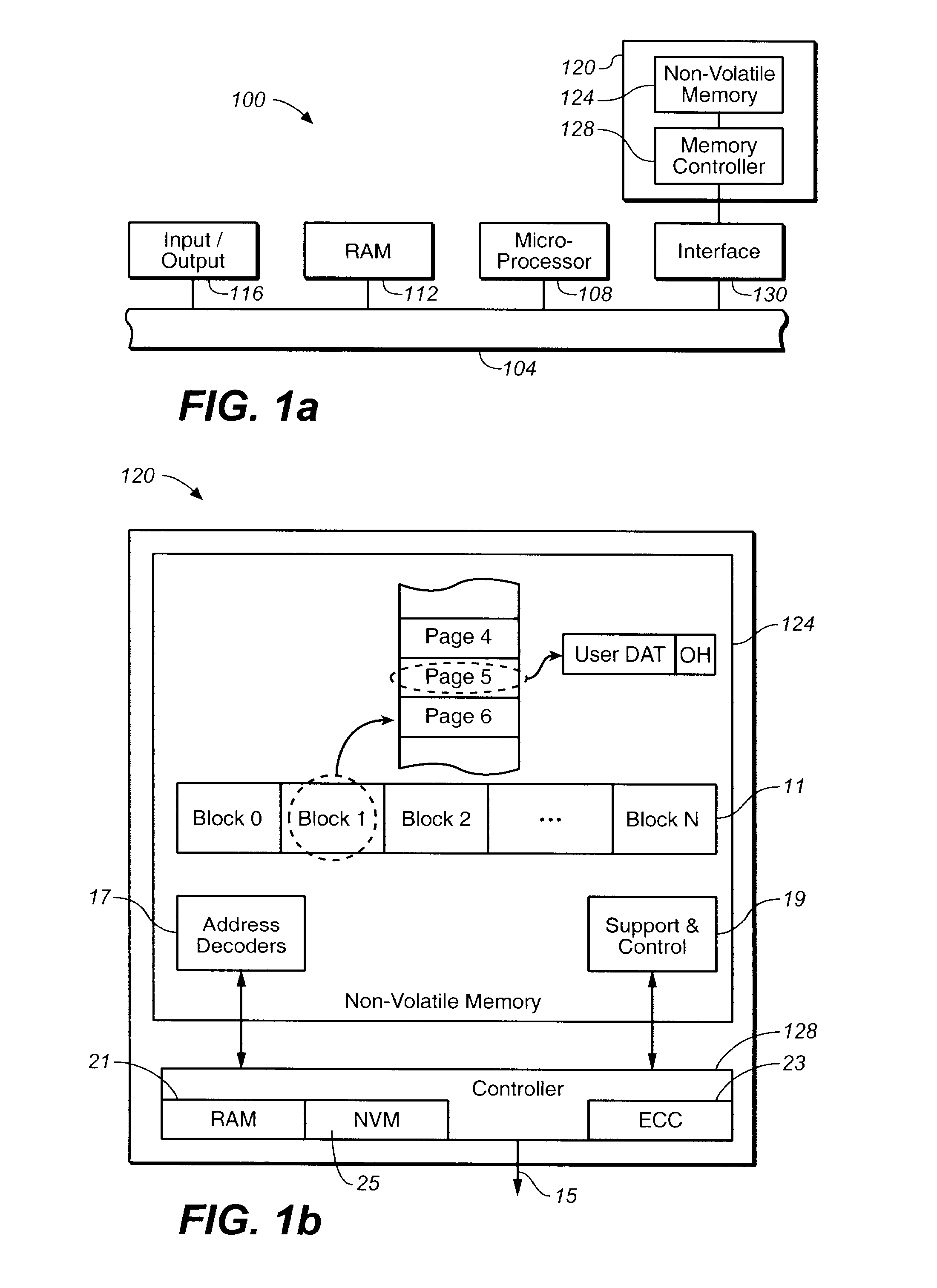Methods of End of Life Calculation for Non-Volatile Memories
a non-volatile memory and end of life technology, applied in the field of mass digital data storage systems, can solve the problems of significant performance degradation, loss of use, and adverse effects on users of flash memory systems
- Summary
- Abstract
- Description
- Claims
- Application Information
AI Technical Summary
Benefits of technology
Problems solved by technology
Method used
Image
Examples
Embodiment Construction
[0022] The present invention is related to providing the user with information of on the remaining lifetime and End of Life (EOL) information for a memory card or other memory device of limited lifetime. While the embodiments described herein describe non-volatile EEPROM based memory systems, the various aspects of the present inventions are applicable to any type of storage medium susceptible to “wear”. For example, an emerging type of non-volatile memory technology is phase-change memory. Information is stored by changing the phase of a given material. A number of other examples of such systems are given in U.S. patent application Ser. No. 10 / 841,379. Such systems also may be prone to “wear”, where the storage medium is less capable of storing information as the number of times the medium has been cycled increases. The present inventions can be readily applied to such technologies.
[0023] A number of methods of improving memory life are known, such as using “gentler” operating val...
PUM
 Login to View More
Login to View More Abstract
Description
Claims
Application Information
 Login to View More
Login to View More - R&D
- Intellectual Property
- Life Sciences
- Materials
- Tech Scout
- Unparalleled Data Quality
- Higher Quality Content
- 60% Fewer Hallucinations
Browse by: Latest US Patents, China's latest patents, Technical Efficacy Thesaurus, Application Domain, Technology Topic, Popular Technical Reports.
© 2025 PatSnap. All rights reserved.Legal|Privacy policy|Modern Slavery Act Transparency Statement|Sitemap|About US| Contact US: help@patsnap.com



